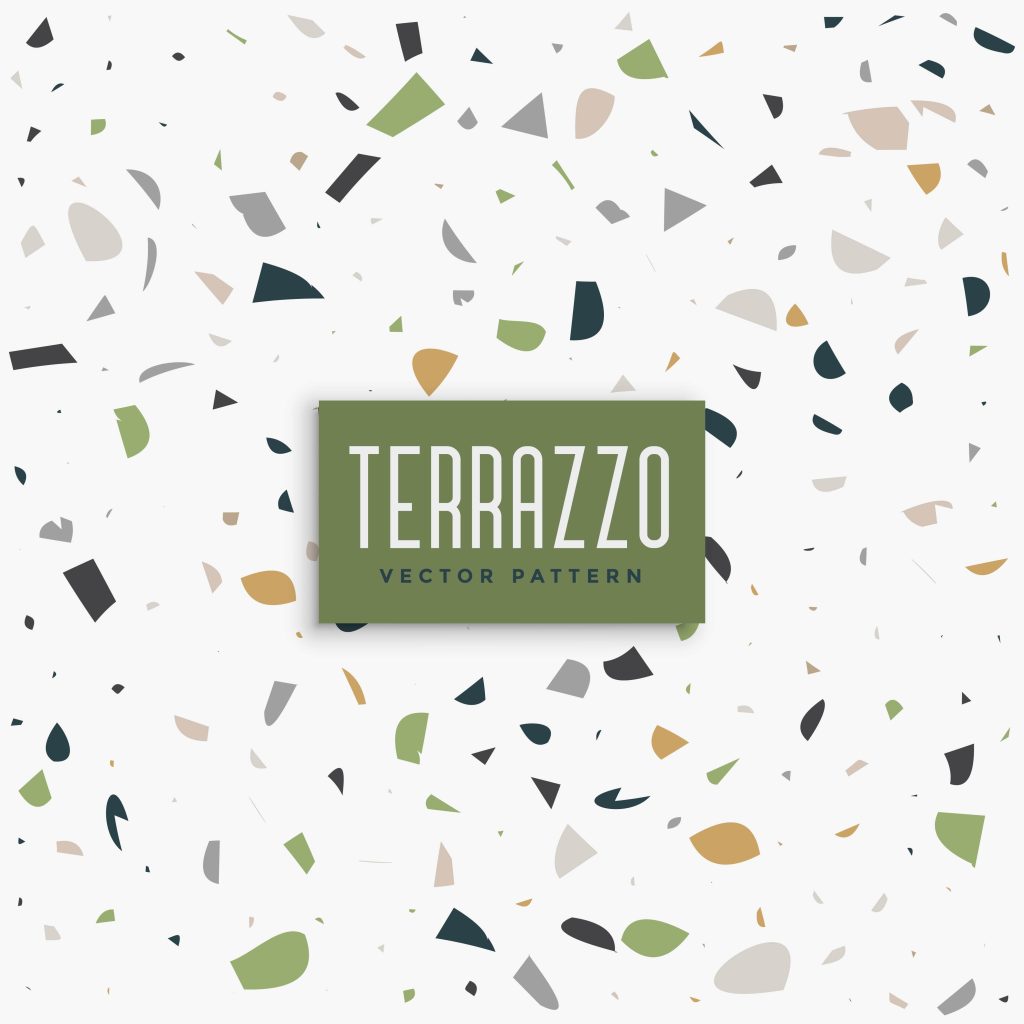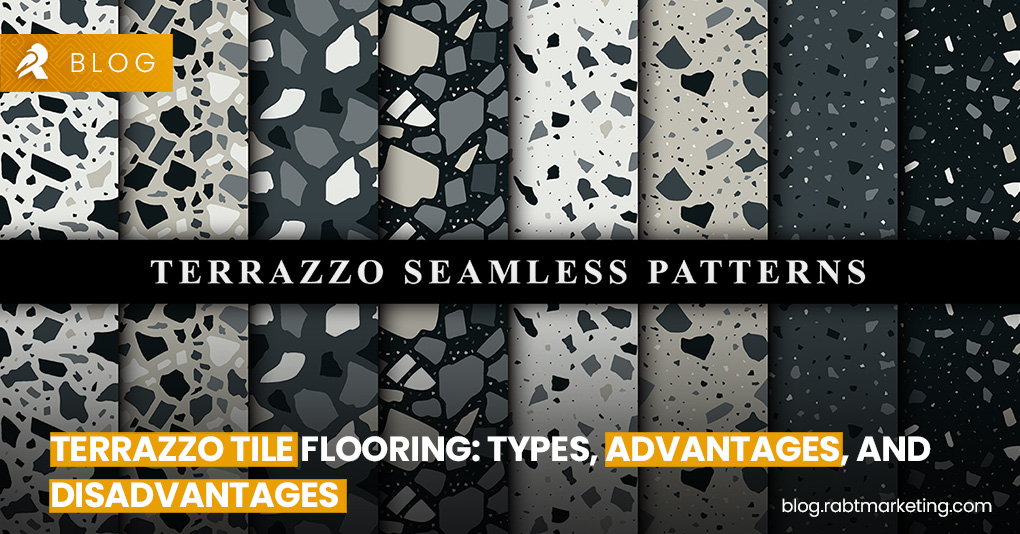Terrazzo flooring is a type of flooring architecture that is a beautiful blend of art and practicality in architecture. This type of flooring originated in Italy. This versatile flooring choice has gained worldwide popularity and is now commonly used in homes, businesses, and public buildings. In this blog post, we’ll explore all aboutterrazzo flooring in detail, including its different types, benefits, and disadvanatages.
Types of Terrazzo Flooring

Terrazzo flooring comes in different types, each offering unique aesthetic appeal and functional characteristics:
Traditional Terrazzo Flooring
This type involves mixing marble, granite, quartz, or other aggregates with cement or epoxy resin to create a durable and visually stunning surface. Traditional terrazzo can be poured in situ or precast into tiles for easier installation.
Epoxy Terrazzo Flooring
Epoxy terrazzo utilizes epoxy resin as a binder instead of cement, offering greater flexibility in design, vibrant colors, and faster installation. It’s ideal for areas requiring seamless and customizable surfaces, such as large commercial spaces and high-traffic areas.
Rustic Terrazzo Flooring
Rustic terrazzo embraces a more natural and textured appearance by exposing larger aggregates and irregular patterns, adding a rustic charm to both indoor and outdoor spaces.
Advantages of Terrazzo Flooring
Terrazzo flooring boasts a plethora of advantages that contribute to its long-lasting popularity:
Durability
Terrazzo Flooring is a very durable type of flooring. It has a very long-lasting impact. With proper installation and maintenance, terrazzo flooring can resist scratches, stains, and heavy foot traffic effectively.
Versatility
Terrazzo flooring can be customized in many ways, from simple designs to complicated patterns and bright colors, so it fits with any style or look according to your ways.
Low Maintenance
Its non-porous surface makes terrazzo easy to clean and maintain, requiring only regular sweeping and occasional damp mopping to keep it looking pristine.
Environmental Friendliness
Terrazzo is composed of natural materials like marble, granite, and recycled aggregates, making it a sustainable flooring choice with minimal environmental impact.
Cost-Effectiveness
Initial installation of terrazzo can be expensive, but in the long run, it can be very effective. It can save us money in the future as well.
Hygienic Properties
Terrazzo’s smooth surface prevents the accumulation of dust, allergens, and bacteria, promoting a healthier indoor environment. This makes it a great choice for hospitals, schools, and other healthcare facilities.
Disadvantages of Terrazzo Flooring
Despite its numerous advantages, terrazzo flooring also has some limitations to consider:
Installation Complexity
Installing terrazzo flooring requires skilled labor, and finding that kind of labor can be a difficult task.
Initial Cost
While Terrazzo offers long-term cost savings, its initial installation cost can be higher compared to other flooring options, particularly for complex designs or custom patterns.
Susceptibility to Cracking
Improper installation or structural movements can lead to cracking in terrazzo flooring, requiring repairs and maintenance over time.
Slippery Surface
Polished terrazzo surfaces can be very slippery when wet, especially in high-moisture areas like bathrooms and kitchens. So, it can be a dangerous and harmful aspect of life.
If you are interested to read about stylish tile patterns of house,click here
Conclusion
In summary, terrazzo flooring is a perfect example of how architecture combines both style and practicality. It offers exceptional durability, versatility, and aesthetic appeal, and that is why it has attained global popularity today. Despite a few drawbacks, the benefits of terrazzo outweigh its disadvantages. All these points make it a preferred choice for flooring in an individual’s house.

